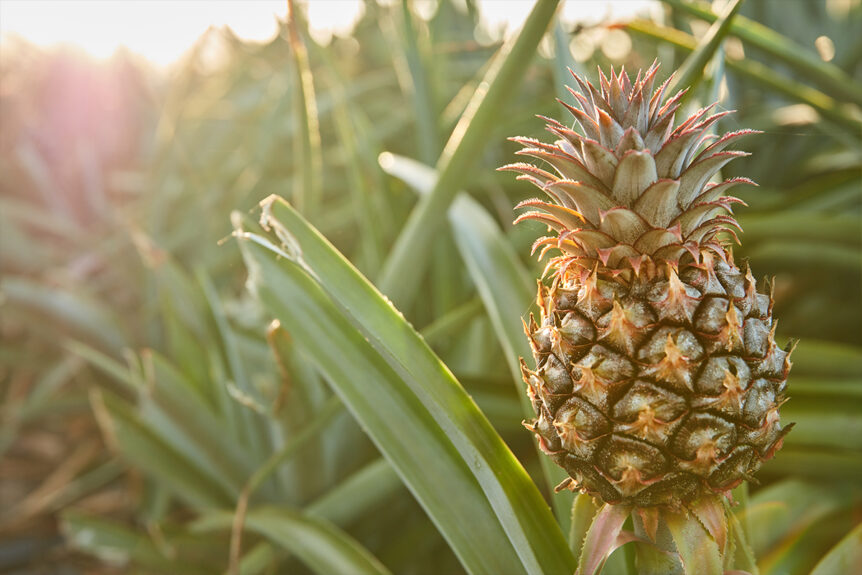The reason for this blog is to state that the GDU assay method is useless in confirming the presence of bromelain. We have proven beyond a doubt that a sample can have a result of 2400+GDU/gram but contain zero bromelain.
Enzyme Development Corporation has been involved with Bromelain since the early 1970’s. Our primary markets for bromelain have been and still are food processing, protein hydrolysis, meat tenderizing and nutritional supplements.
One of the consequences of the Covid shutdowns was a world shortage of bromelain. Bromelain is an agriculture related product. It is produced from the stems of the pineapple plant. Most of the world Bromelain is from pineapples produced in Thailand and in Indonesia. When Covid hit, the agriculture workers returned to their homes and planting ceased for a significant period of time. With no new plantings, after a certain amount of time, there were no stems available for bromelain extraction. This is what caused the market shortage. Where there is a shortage there are rapid price increases or panic buying. In that case, there are unscrupulous companies that will reduce the amount of bromelain to lower than the claimed activity, substitute other enzymes but still label it bromelain, or find a way to cheat the assay method. All three have happened.
There are two primary markets for bromelain. The first is food processing, primarily protein hydrolysis such as soy and casein. The reactions are controlled, and any variance is quickly apparent such as change in viscosity not happening at the normal rate. In this case, systems are in place to monitor changes to quality and shorting the activity in the product or product substitution is readily apparent and corrective measures taken to preserve final product quality.
The second primary market is the nutritional supplement industry. It is an unfortunate reality that much of the industry does not test incoming material adequately. The C of A is taken as gospel with minimal, if any, validation. If the C of A says 2400 GDU/g bromelain, then it must be true. In the food industry, there is an immediate response if the product or the stated activity is not true. This does not happen with supplements. The response to the enzyme is by an individual and each individual has a slightly different expectation. Depending on the expectation of performance by the enzyme, the individual may think something has changed within themselves rather than that the supplement has changed.
Over the course of the last two years, EDC has seen a marked increase in the number of defective samples of bromelain we have tested. The most common was just low activity that could be written off as ongoing issues with the GDU method. Now we are seeing samples with no/little GDU activity indicating fillers such as maltodextrin. We have seen the presence of undeclared sulfites indicating substitution of part of the bromelain with a different enzyme. The most concerning of all are the number of samples showing 2400 GDU activity but containing zero bromelain.
What makes the confirmation easy is that bromelain is not a single enzyme protein or measured by a single activity. Bromelain is regularly tested by the CDU method, (casein digestion units), the MCU method, (milk clot units), the FCC PU method, (Food Chemicals Codex Plant Proteolytic Activity), the FIP method (European Pharmacopeia), as well as several other specialized methods. EDC has a 60 year+ history of the relationship between these assays and each other. We know what to expect from GDU:CDU or GDU:MCU, etc. We also know the other physical properties such as there is usually zero detectable sulfites or that there is generally no discernible odor.
Over the course of the last three years, we have seen numerous samples of “2400 GDU Bromelain” claimed but that the expected side activities were only ½ to ¼ the expected values. For example, a bromelain claiming 2400 GDU Bromelain should have a CDU in the range of 1100/mg to 1300/mg. EDC was regularly seeing activities in the range of 300 CDU to 600 CDU. When tested by other methods, similar low results were confirmed. Also, a common country of origin for these non-Bromelain products is India.
More recently, we have seen other issues than just low activity. When sulfites are detected or there is a strong odor, this indicates that something may be been substituted in for bromelain. It this case, it is likely papain. Undeclared sulfites are a serious issue as well.
What is more concerning to EDC is a recent development with the GDU method. We were testing claimed bromelain and getting essentially zero enzyme activity from multiple assays. The same samples were sent to an outside lab to test the GDU. The GDU was confirmed at 2400+GDU/gr. The sample was also sent out for SDS-PAGE and it was confirmed that there was no bromelain in the sample. With Bromelain, there should be multiple bands in the 20,000 to 30,000 Dalton range. The tested material showed no bands above 5000 Daltons.
The only conclusion is that someone has found a way to spoof the GDU assay method to give a false report. In order to validate that they have bromelain, more than one activity assay, sulfite allergen testing, physical appearance comparisons and other testing needs to be run by companies purchasing Bromelain.
To discuss your specific application or request samples, please contact Enzyme Development Corporation at info@EnzymeDevelopment.com
Phone: +1-212-736-1580
© Enzyme Development Corporation, 2024

